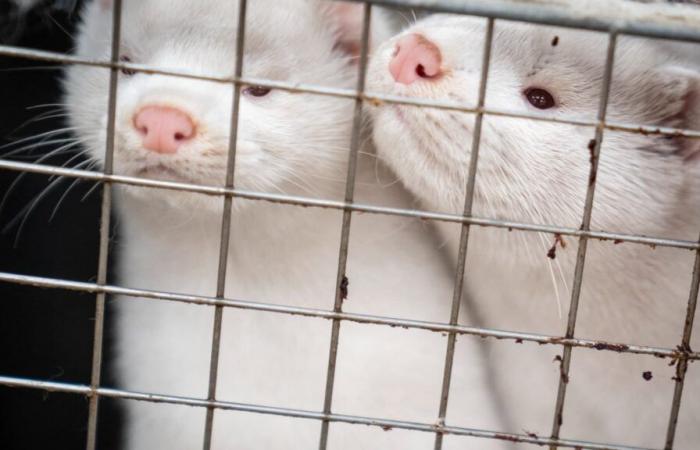Of the 125 viruses detected, including 36 never discovered before, 39 have a “high risk” of passing from one species to another.
Dozens of viruses, some new and with the potential to transmit to humans, have been detected in fur farms in China, according to a study published Wednesday, September 4 in the journal Nature.
Virologist Edward Holmes, who has previously led research into Covid-19, is one of the co-authors of this new study on the potential danger of viruses in these farms in the country where the first cases of Covid appeared at the end of 2019.
39 have a “high risk” of transmission to humans
The Chinese-led team of scientists sequenced genetic material from lung and intestinal samples of 461 fur-bearing animals, such as mink, rabbits, foxes and raccoon dogs, that died from diseases across the country between 2021 and 2024.
Most came from livestock, but some had been raised for food or traditional medicine. About 50 were wild animals. The team detected 125 viruses, including 36 never before discovered, the study said.
Thirty-nine of these viruses, including 13 new ones, potentially pose a “high risk” of passing from one species to another, including to humans, the researchers estimate.
Several types of bird flu have also been detected in guinea pigs, minks and muskrats. Seven types of coronavirus have also been detected, but none closely related to SARS-CoV-2.
Coronavirus detected in minks
Of most concern, Holmes said, is the pipistrelle coronavirus HKU5, which had previously been detected in bats but was now found in the lungs of two farmed minks. It is a relative of the Middle East respiratory syndrome (MERS) coronavirus, which is potentially fatal to humans.
“Its passage from bats to farmed mink should serve as a warning signal,” said the virologist and professor at the University of Sydney, for whom “this virus must be monitored.”
The latest mysteries of long Covid
Thousands of unknown viruses are believed to be circulating among wild mammals, and scientists fear that fur farms could be spreading them to livestock, which could then expose humans.
“Firmly believing that the wildlife trade is behind the emergence of SARS-CoV-2,” Edward Holmes told AFP that “the fur trade could easily spawn another viral pandemic.”
In their study, the researchers call for increased surveillance of fur-farmed animals, including mink, raccoon dogs and guinea pigs, which have the highest number of “high-risk” viruses.
Denmark culled farmed mink amid Covid fears in 2020, but has since re-authorised the practice.







